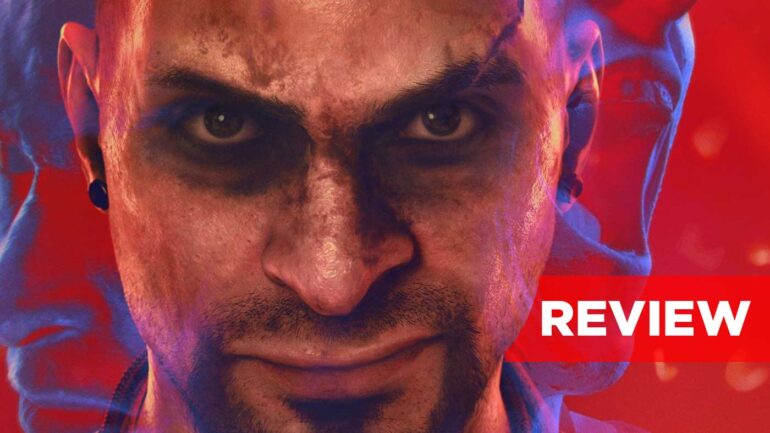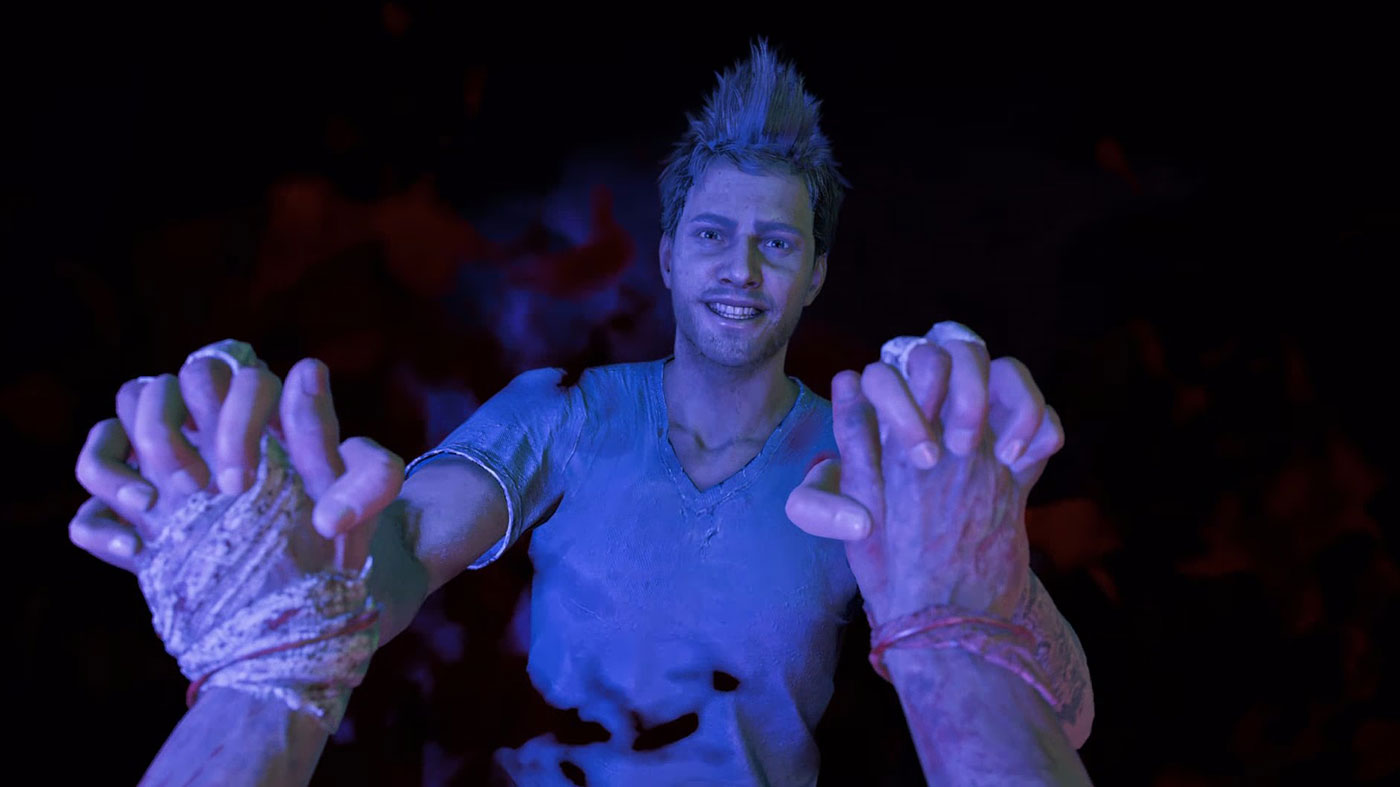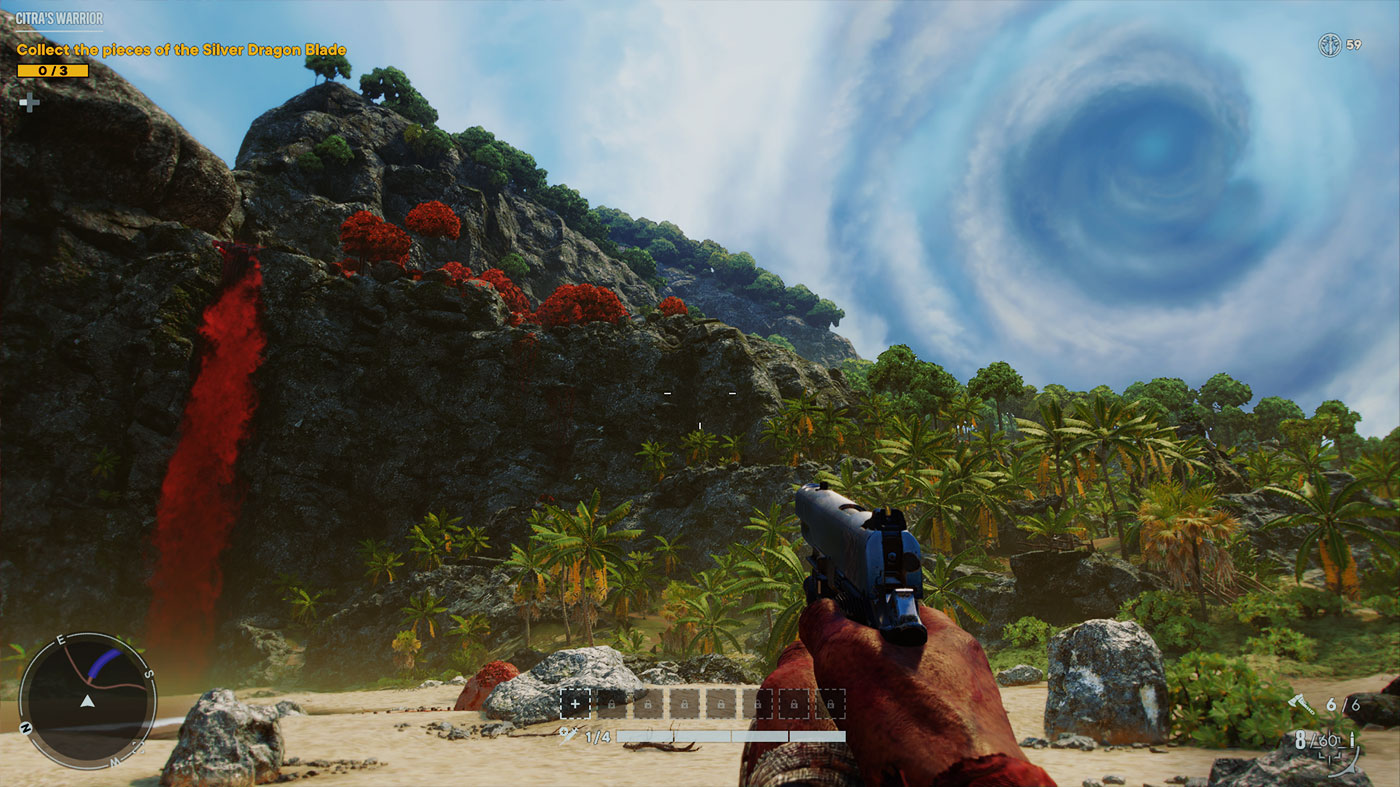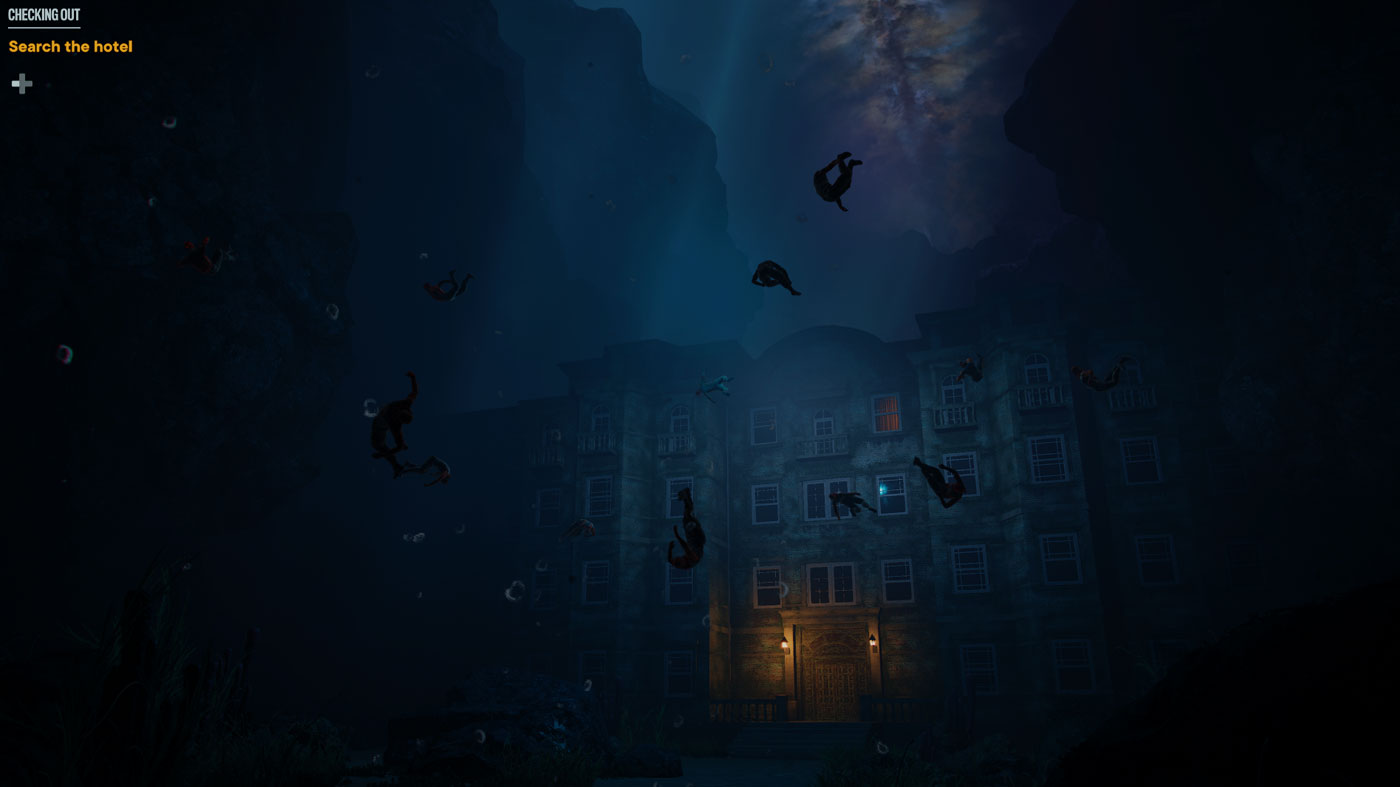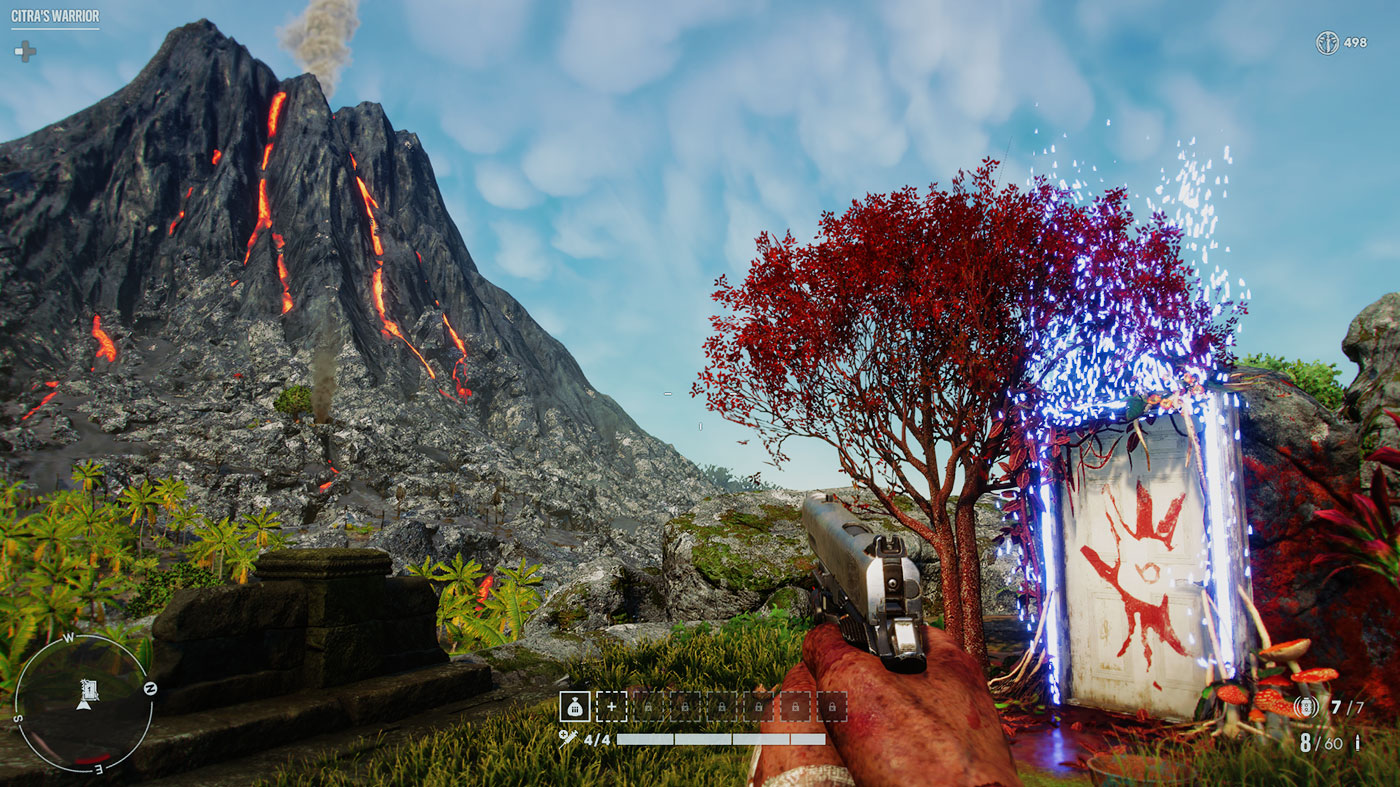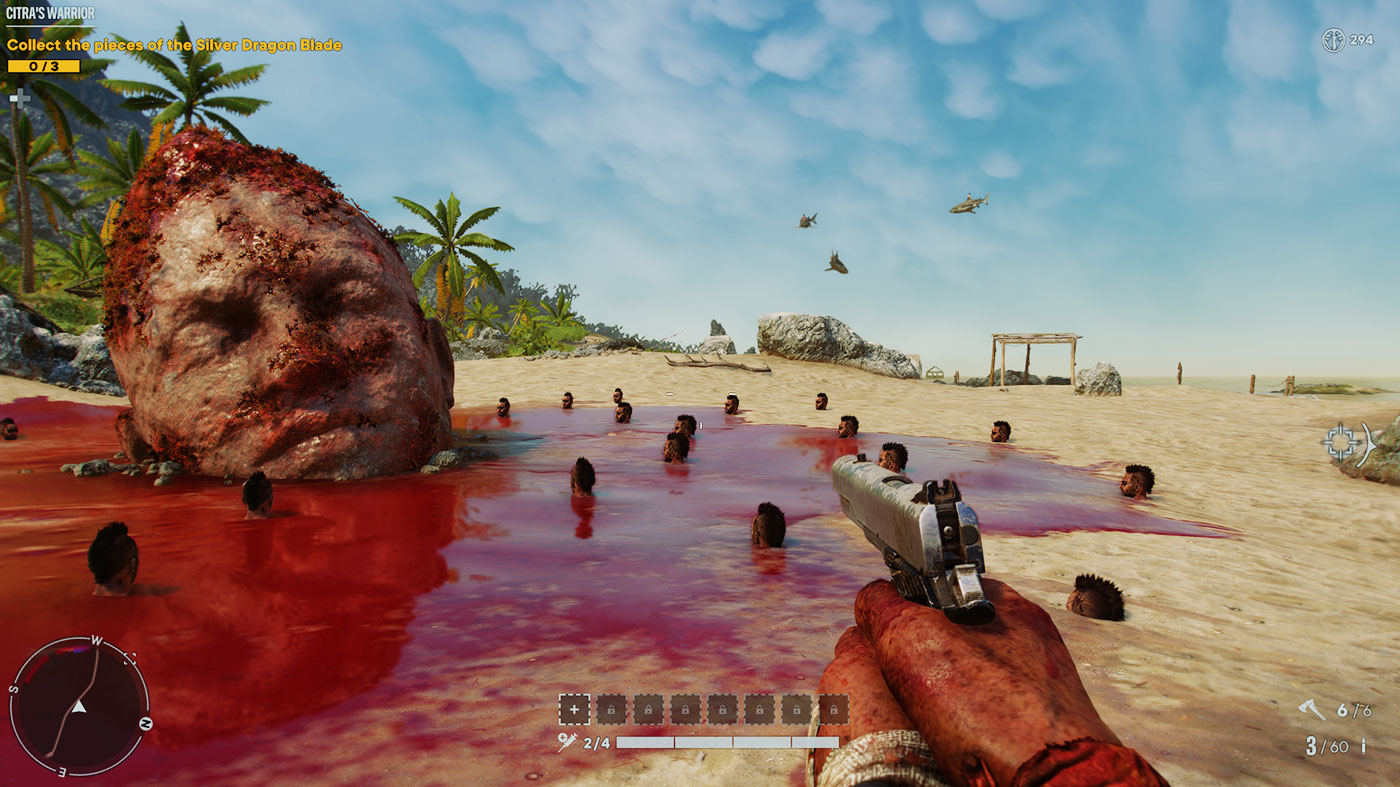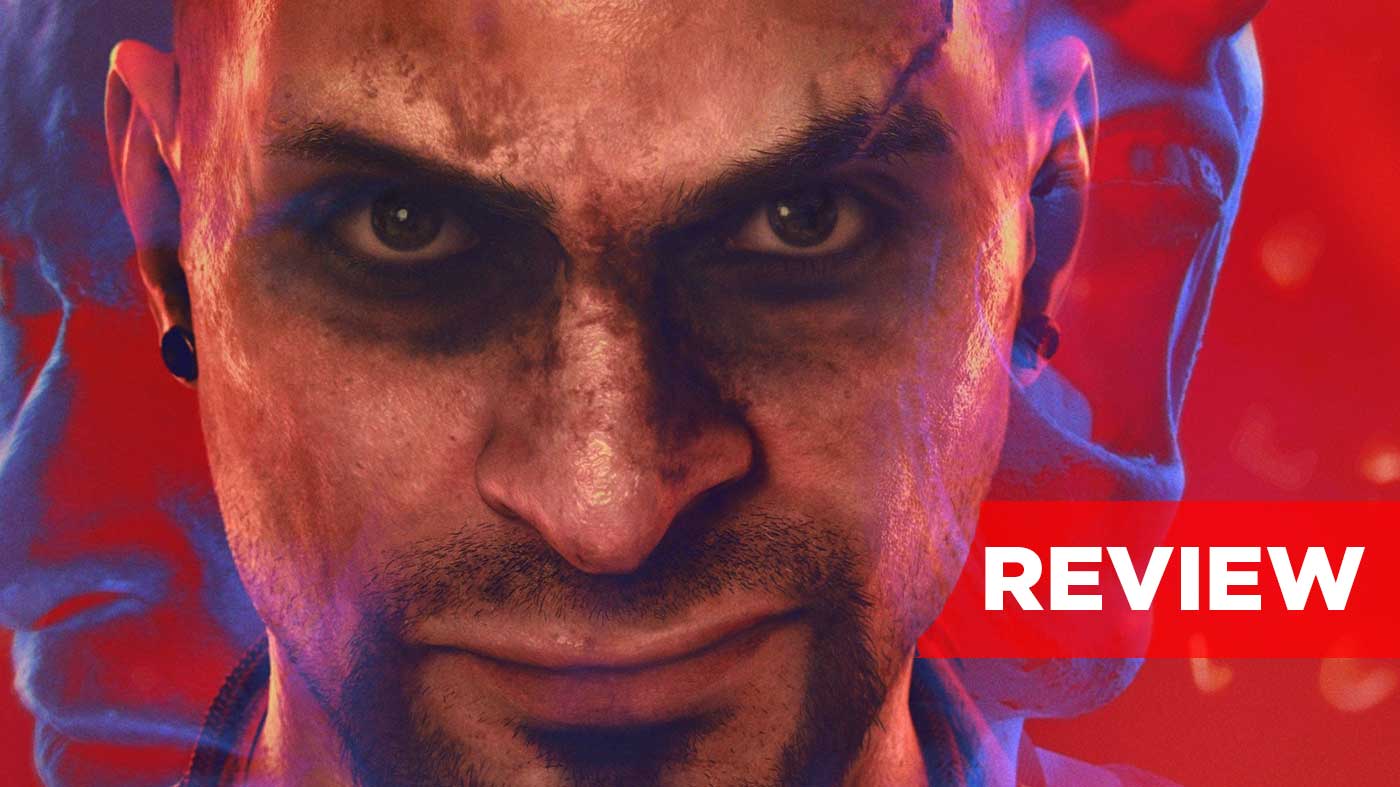Far Cry 6 was great fun, and I was even more excited to give its upcoming season pass content a try as it revisits the thing we love most about the Far Cry games – the villains. Whilst I enjoyed Far Cry 5, the season pass was just so unremarkable that I was worried the same might happen with Far Cry 6. Thankfully, while I’ve only played the first experience – Vaas: Insanity – I’m excited to say that it’s more interesting than anything offered up by Far Cry 5, and it’s also an interesting take on the tried-and-true rogue-like formula.
Insanity opens with Vaas waking up following his lethal altercation with Jason Brody in Far Cry 3. He’s woken up inside of his mind, however, and must follow a mysterious voice to reassemble the three pieces of the silver dragon blade to escape. From the get-go, it’s made clear to Vaas that he won’t just grab them, and that he must confront some of his past enemies and relive his most traumatic memories to be strong enough to retrieve them. It’s a very introspective set-up for one of Far Cry’s most notoriously unstable villains and perhaps the smartest way to bring Vaas back in a big way without it being too tacky or unnecessary.
That being said, I’m not entirely sure that we even needed to see this much more of Vass Montenegro. So much of Insanity is designed around the premise of better fleshing out the characters of Far Cry 3, with a focus on Citra and Vaas. But it always felt like we knew just enough about Vaas to understand him as a villain as the credits of Far Cry 3 rolled. The extra backstory and context provided here will appeal to some people, no less. Still, it felt slightly unnecessary in the big scheme of things.
We’ve all heard that age-old adage that Insanity is doing the same thing repeatedly, expecting a change in result. That seems befitting for how Vaas: Insanity plays as a game. The experience is a smaller, more contained map that sees Vaas start in the middle. He must travel to the three ends of the island to assemble the pieces of the dragon blade and escape his mind. As a player, it’s technically possible to go to each of these areas and finish up everything quickly, but without completing side missions and building up Vaas and his abilities, it’s going to be incredibly difficult.
Vaas: Insanity is a rogue-like at heart. You can use gathered cash to purchase permanent abilities for Vaas to make him more resilient and dangerous in combat. Weapons can be earned in trials scattered throughout the map (as you only start with a pistol on each escape attempt), but dying loses your guns too. Thankfully, any trials you complete adds those weapons to the armoury, which can be bought with cash without completing the trials again. Weapons in the armoury can similarly be upgraded with cash.
The permanent traits themselves are what you’d expect from a standard Far Cry skill tree. Better takedowns, more health, more healing items, and more equipment to aid in traversing the map. Certain traits can be unlocked that allow Vaas to keep larger amounts of cash when he dies, which alleviates the frustration of repetition that naturally comes with the rogue-like design.
Besides the three primary missions, which are the most difficult, there are other things to do inside Vaas’ mind. Mindfuck missions are pretty much what they sound like – impossible spaces and trippy visuals – but they offer a deeper insight into Vaas’ character and his relationships. Armoury challenges allow you to take on a group of enemies to permanently unlock weapons for your armoury. The most difficult optional content – the Citra Trials – are almost as tricky as the main missions and offer better powers to Vaas not found elsewhere.
There are other (silver) powers to be found throughout each escape attempt at random intervals. Powers take the shape of human hearts in the game world and can be equipped on Vaas for his current escape attempt. These offer a few less traditional buffs to Vaas – like refilling ammo with every headshot and the like – but can only be equipped to slots that can be unlocked with cash. They also disappear whenever Vaas dies, so getting a good run filled with powers that complement one another is helpful, and experimentation is encouraged.
There’s a running theme here, and that’s the fact that cash really rules everything you do in Insanity. You can use it to prioritise weapon upgrades or use it to bring a larger number of weapons into battle. You can even use it to unlock more power slots, potentially removing the need for arming yourself up with firearms in the first place. There’s enough flexibility here to build your Vaas the way you want to which I can appreciate.
These elements come together to offer a surprisingly enjoyable rogue-like experience that does things a little bit differently. It feels like what downloadable content should always strive to be – something in a similar vein to the main game while experimenting with concepts that might’ve been a bit too different to fit there. Vaas: Insanity does a great job at making repetition engaging, though I struggle to see why people might return to it after finishing it the first time. You can increase the “mind level” to up the difficulty and your dividends of rewards. Still, beyond that, I struggle to see much reason to replay it after uncovering all the secrets it has to offer. That being said, there are a challenging six or so hours here if you do the bare minimum, perhaps even more if you go for more or attempt to finish all the mind levels.
Of course, I can’t get through talking about this experience without talking about Michael Mando. He’s the voice and likeness of Vaas, and he slips straight back into the character like no time has passed at all. A lot of Insanity is spent inside Vaas’ mind, both literally and figuratively, so hearing Mando speak to himself so often gives great insight into Vaas’ character and a solid reminder of why fans loved him so much.
Similarly, given that the game takes place inside the mind of somebody so unhinged, it’s visually a feast to truly sit and take in. So much of the world is bright and colourful – recalling the best bits of Far Cry 3. But it’s so abstract and out there that it does a great job of really selling the idea that we’re inside the mind of someone whose thoughts aren’t as collected as ours. The map might be one of the smaller ones in Ubisoft’s repertoire, but Insanity’s world is easily one of their most interesting.


